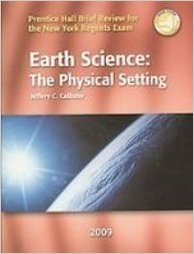
All Solutions
Page 13: Practice Questions
$percent: deviation:(P_{D})$ = $dfrac {amount:of:deviation}{accepted:value} times 100%$
for the first student:
$:::::::: A_{D} = 140 -146= -6 :g$
$::::::::P_{D}=dfrac{-6}{146}times 100%$=$-4%$
for the second student:
$:::::::: A_{D} = 150 -146= 4:g$
$::::::::P_{D}=dfrac{4}{146}times 100%$=$2.7%$
for the third student:
$:::::::: A_{D} = 160 -146= 14:g$
$::::::::P_{D}=dfrac{14}{146}times 100%$=$9.5%$
density=dfrac{mass}{volume}=dfrac{400}{500}=0.8: g/mL
$$
$percent: deviation:(P_{D})$ = $dfrac {amount:of:deviation}{accepted:value} times 100%$
$::A_{D} = 612 – 600= 12:g$
$::::::::P_{D}=dfrac{12}{600}times 100%$=$2%$
$$begin{array}{c c c} hline
text{Sample} & text{Volume (cm$^3$)} & text{Mass (g)} \ hline
text{A} & 2.5 & 12.5 \
text{B} & 6.0 & 30.0 \
text{C} & 20.0 & 100.0 \
hline
end{array} $$


$percent: deviation:(P_{D})$ = $dfrac {amount:of:deviation}{accepted:value} times 100%$
$::A_{D} = 35000 – 50000= -15000:gallons$
$::::::::P_{D}=dfrac{-15000}{50000}times 100%$ = $-30%$
$::::::::Rate=dfrac{5000}{14}$=$357:gallons/day$
$::::::::Rate=dfrac{2600}{4}$= $650:km/day$
2- each student will put the apple on the stream at the start of rope (0-foot).
3- each student will determine the time that his apple took to reach the end of the rope (10-foot distance).
4-there will be a different records of the time$(T_{A})$ for the same distance.
5- each student will calculate his apple velocity$V_{A}$.
$V_{A}=dfrac{distance:(10 :foot)}{time ;(T_{A})}$
6- there will be different values of $V_{A}$
7-to calculate the average velocity$V_{G}$
$V_{G}$= $dfrac{V_{A1}+V_{A2}+V_{A3}+….}{number :of: times: measuring :the: speed }$
as example: if there were three students wanted to measure the speed the law will be:
$V_{G}$= $dfrac{V_{A1}+V_{A2}+V_{A3}}{3 }$

